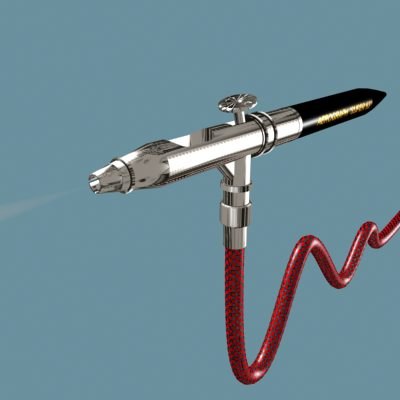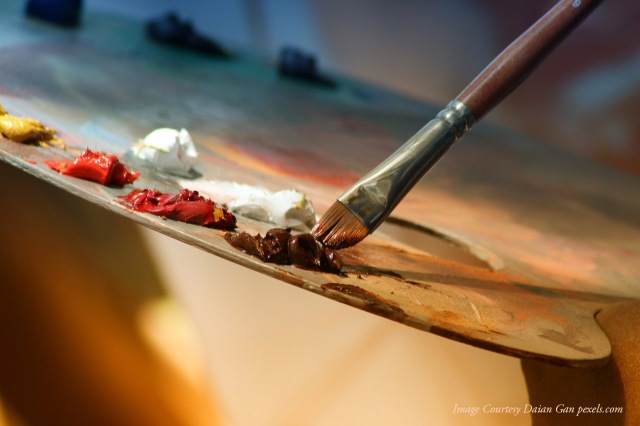
You can pretty much draw or paint on anything nowadays, just as long as the surface is properly prepared and you have the right materials for the job.
Sometimes its having the right substrate for the medium you choose to use, especially when working with watercolors or professional design markers.
Other times the artistic medium you have may go on just about anything, like acrylic paint. It takes a little research, but hopefully this beginners guide will help you get started on the right track to creating your next masterpiece.
Mediums can be described as a form of artistic expression or communication, like paints for painting. Mediums can also refer to the additives mixed with paint, such as linseed oil while oil painting.
Medium examples

Created: 17 February 2013
- Acrylic paint– has the ability to bond to many different surfaces and additional mediums can be used to modify their binding characteristics (ex. H2O). Acrylics can be used on paper, canvas and a range of other materials. Certain manufactured surfaces such as MDF boards, should be properly prepared and sealed before applying paint. Acrylics may be used in thick layers built up, or it can be applied in thin washes much like watercolors and other water based mediums. Acrylic paint is fast drying and generally not removable after surface adhesion. There are also different types of acrylic paint made for uses such as exterior painting and thick impasto style techniques. Acrylic paint can be cleaned out of a brush with any soap. https://en.wikipedia.org/wiki/Acrylic_paint

- Oil paint– The vehicle and binder of oil paints is linseed oil (or another drying oil), and allow for more time to blend colors and apply even glazes over under paintings. This slow-drying aspect of oil can be seen as an advantage for certain techniques, but it impedes an artist trying to work quickly. Oil paints may require the use of solvents such as mineral spirits or turpentine to thin the paint and clean up. These solvents generally have some level of toxicity and are often found objectionable. Common modern applications of oil paint are in finishing and protection of wood in buildings and exposed metal structures such as ships and bridges. Its hard-wearing properties and luminous colors make it desirable for both interior and exterior use on wood and metal. Due to its slow-drying properties, it has recently been used in paint-on-glass animation. Thickness of coat has considerable bearing on time required for drying: thin coats of oil paint dry relatively quickly. A favorite surface to the old masters of fine art oil painting prefer to use canvas or a type of wood panel. When using canvas or wood, the surfaces do have to be prepped before paint application to ensure proper adhesion. https://en.wikipedia.org/wiki/Oil_paint
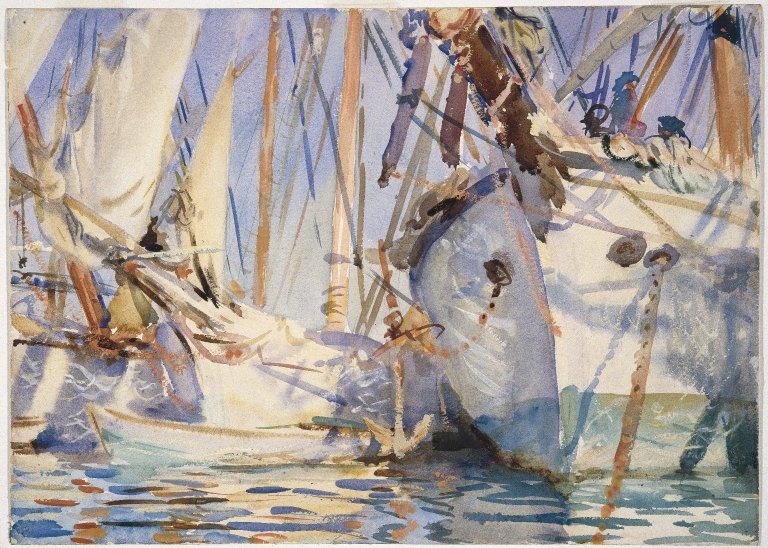
- Watercolor/ gouache (opaque watercolor)- the paints are made of pigments suspended in a water-based solution. Watercolor refers to both the medium and the resulting artwork. The traditional and most common support—material to which the paint is applied—for watercolor paintings is paper. Other supports include papyrus, bark papers, plastics, vellum, leather, fabric, wood and canvas. The preferred binder is natural gum arabic, with glycerin and/or honey as additives to improve plasticity and solubility of the binder, and with other chemicals added to improve product shelf life. https://en.wikipedia.org/wiki/Watercolor

- Artist, alcohol based markers (Copic)- Copic markers are available in 358 permanent, non-toxic, alcohol-based ink colors and are refillable using standard color ink refills. The refill inks can be mixed to create custom colors, and empty markers are sold for this purpose. The markers are airtight to prevent them from drying out and they are guaranteed a shelf-life of 3 years. Sketch markers, which are the most popular version, have a chisel-style tip at one end and a brush tip at the other, though additional styles of replaceable nibs and tips are available. https://en.wikipedia.org/wiki/Copic

- Graphite pencil– Most pencil cores are made of graphite powder mixed with a clay binder. Graphite pencils (traditionally known as ‘lead pencils’) are used for both writing and drawing and produce durable grey or black marks that can be erased easily. Though writing is easily removable with an eraser, it is otherwise resistant to moisture, most chemicals, ultraviolet radiation and natural aging. https://en.wikipedia.org/wiki/Pencil
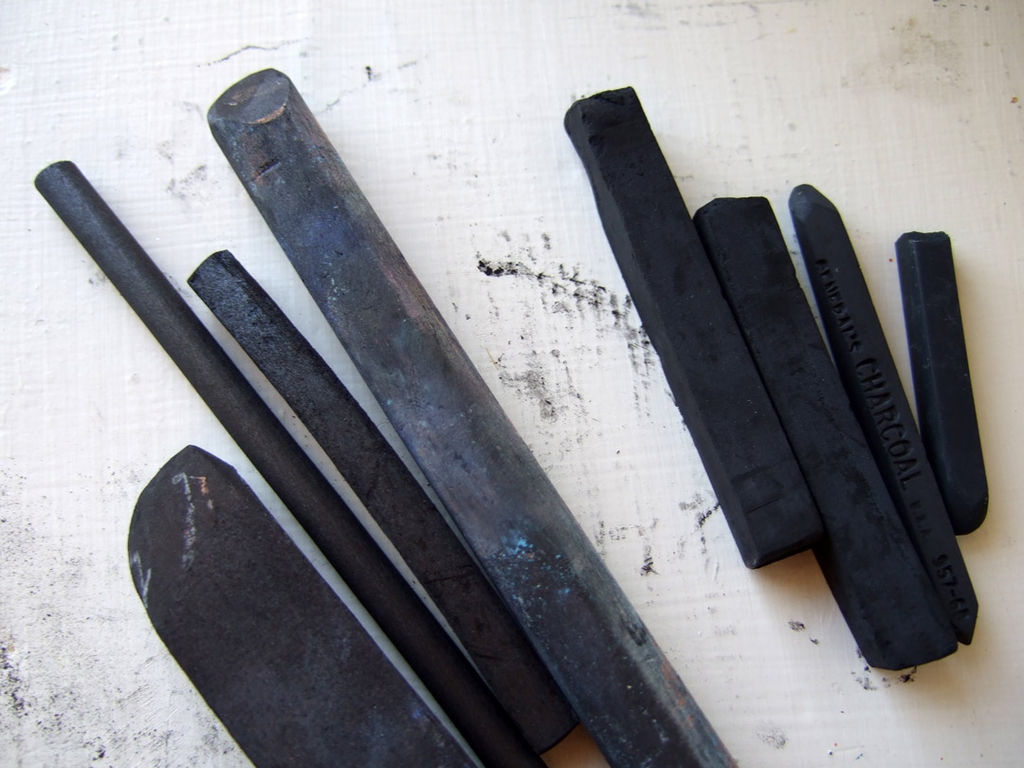
- Artists’ charcoal- is a form of dry art medium made of finely ground organic materials that are held together by a gum or wax binder or produced without the use of binders by eliminating the oxygen inside the material during the production process. These charcoals are often used by artists for their versatile properties, such as the rough texture that leaves marks less permanent than other art media. Charcoal can produce lines that are very light or intensely black, while being easily removable, yet vulnerable to leaving stains on paper. The dry medium can be applied to almost any surface from smooth to very coarse. Fixatives are often used with charcoal drawings to solidify the position to prevent erasing or rubbing off of charcoal dusts. https://en.wikipedia.org/wiki/Charcoal_(art)
A substrate is a solid substance or base, that another substance is applied to which that second substance adheres, such as paper or canvas. Listed below are different mediums and substrates that are commonly used
Substrate examples

- Wood- A panel painting is a painting made on a flat panel made of wood, either a single piece, or a number of pieces joined together. Until canvas became the more popular support medium in the 16th century, it was the normal form of support for a painting not on a wall Panel painting is very old; it was a very prestigious medium in Greece and Rome, but only very few examples of ancient panel paintings have survived. A carpenter would construct a solid wood piece the size of the panel needed. It would be planed and sanded and if needed, joined with other pieces to obtain the desired size and shape. The wood would be coated with a mixture of animal-skin glues and resin and covered with linen (the mixture and linen combination was known as a “size”) Once the size had dried, layer upon layer of gesso would be applied, each layer sanded down before the next applied, sometimes as many as 15 layers, before a smooth hard surface emerged. https://en.wikipedia.org/wiki/Panel_painting

- Canvas- Canvas took over from panel in Italy by the first half of the 16th century, a change led by Mantegna and the artists of Venice (which made the finest canvas at this point, for sails). Popularly used by artists as a painting surface, canvas made of cotton or linen, is typically stretched across a wooden frame. Canvas can also be printed on using digital printers to create canvas prints referred to as Giclée. Linen canvas is popular with oil painting artists, as linen is composed of high quality material. Cotton duck, which stretches more fully and has an even, mechanical weave, offers a more economical alternative more used by acrylic painters. Gesso can be added to the canvas as to prepare the surface to accept the paint. Gesso can be applied in layers and sanded to achieve a smoother surface to paint on, or the natural weave of the canvas me be left to show through the gesso in order to add texture to the artwork. https://en.wikipedia.org/wiki/Canvas
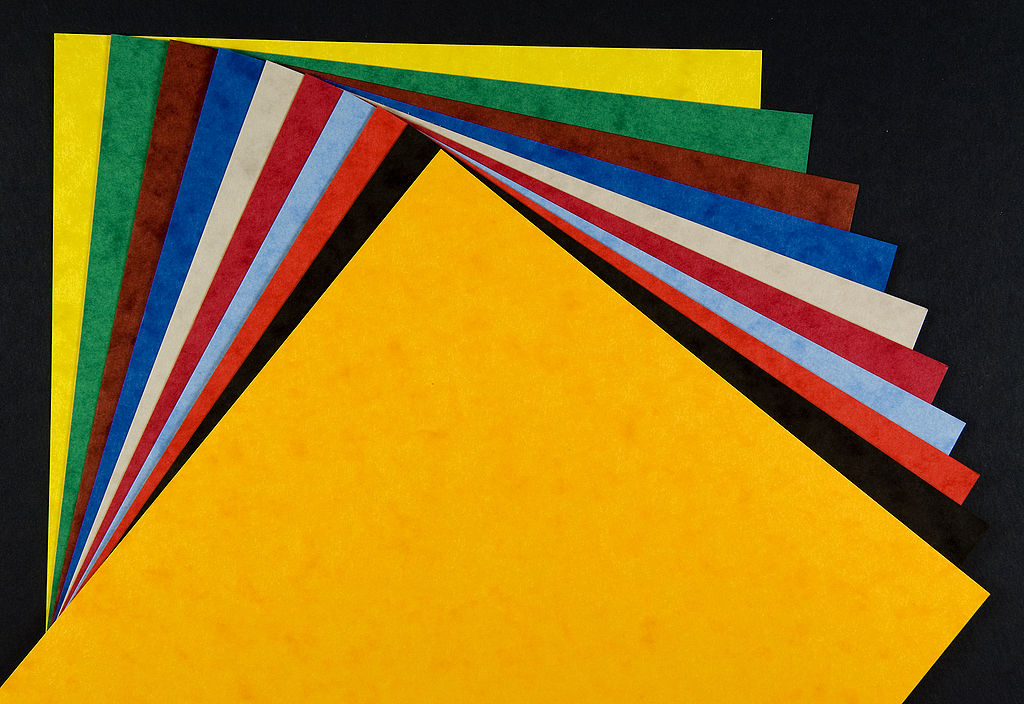
- Paper- is a thin material produced by pressing together moist fibers of cellulose pulp derived from wood, rags or grasses, and drying them into flexible sheets. Arches paper is a brand of air-dried paper that is used by printers and watercolorists.The product range comprises the following papers:
- Watercolour papers
- Drawing papers: these mould-made papers have a puffy aspect, a nice feel and conservation qualities.
- Printmaking papers
- Oil papers
Art papers are one of the highest quality printing papers and are used for illustrated books, calendars and brochures. The grammage varies from 100 to 230 g/m2. These papergrades are triple coated with 20–40 g/m2/side and have matte or glossy finish. Higher qualities often contain cotton. https://en.wikipedia.org/wiki/Paper#Applications

- Plastic- Plastic is a tricky surface to paint. Unlike wood, plastic is not porous, so the paint has little to stick to. With the right amount of preparation, however, you can paint plastic with success. Keep in mind, however, that depending on the type of paint and plastic you are working with, the paint may eventually chip off, especially after heavy or frequent use. With the right preparation, you can paint just about anything. Washing, drying, sanding, and priming will help ensure paint adhesion to the plastic surface. There is even a product called adhesion promoter that helps paint to stick to difficult surfaces such as plastic. Apply in light even coats, and let the paint thoroughly dry between each coat. However, there are still a few plastic surfaces not suitable for painting ( plastic/laminate floors, bathtubs/shower stalls, or counters). https://www.wikihow.com/Paint-on-Plastic

- Metal- You can use either a water-based acrylic paint or an oil-based paint, as long as the container identifies “for metal” somewhere on its labeling. Oil-based paints take much longer to dry than acrylic paint, and acrylic metal paints are available for paint-on application or in spray cans, which can shorten painting time significantly. As with all metal-painting projects, proper preparation makes the difference between a quality paint job and how well the newly painted item will stand up to age and weathering, especially when the metal is used outdoors.https://www.hunker.com/13412467/what-kind-of-paint-do-you-use-on-metal-surfaces
These are just a few examples on what is out there for art and artists. Thanks for stopping by and giving a look around. We hope you enjoyed the article and will see you soon.

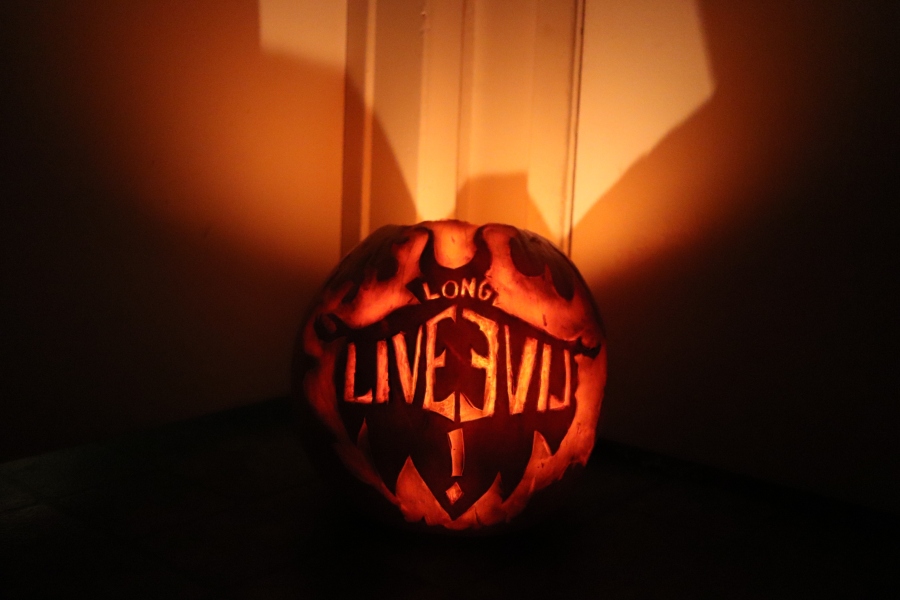

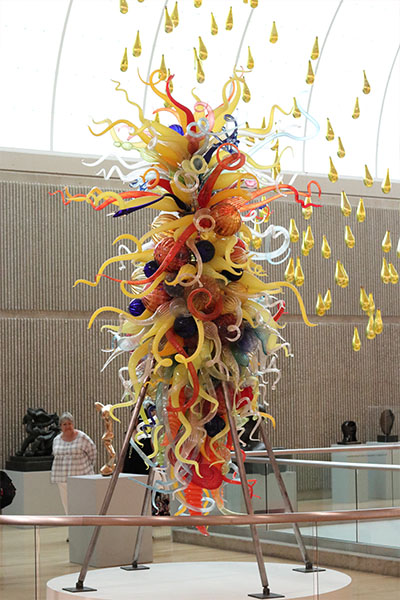





















 October 1, 2018 – January 14, 2019
October 1, 2018 – January 14, 2019







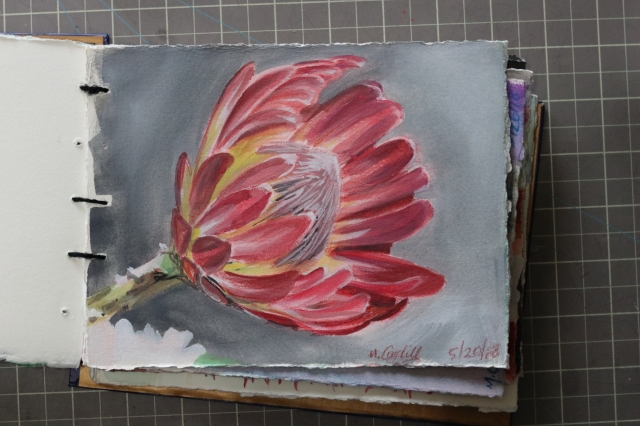
 podcast by Michael Cogdill.
podcast by Michael Cogdill.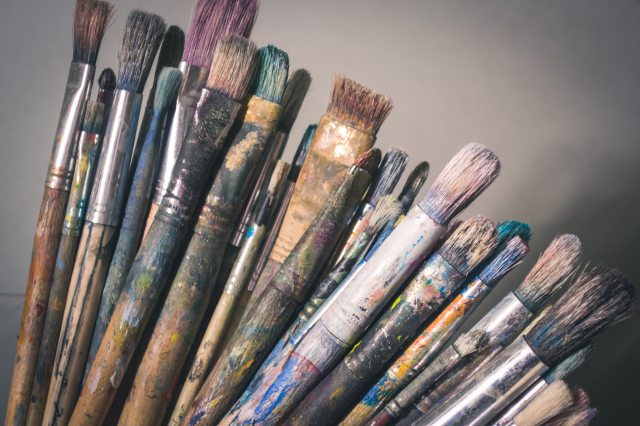
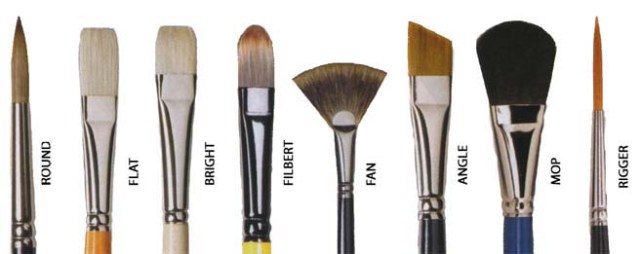 By Vinegartom at English Wikipedia –
By Vinegartom at English Wikipedia – 